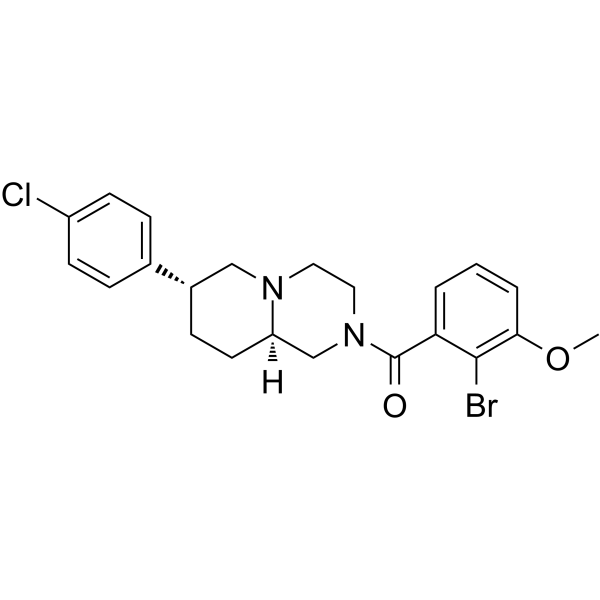| Description |
MAGLi 432 is a non-covalent, potent, highly selective, and reversible MAGL inhibitor. MAGLi 432 binds with high affinity to the MAGL active site, with IC50 values of 4.2 nM (human enzyme) and 3.1 nM (mouse enzyme). MAGLi 432 can be used in the research of chronic inflammation, blood–brain barrier dysfunction, neurological disorders such as multiple sclerosis, Alzheimer’s disease and Parkinson’s disease[1].
|
| Related Catalog |
|
| In Vitro |
MAGLi 432 (10 μΜ, 25 min) displays selectivity and potency for MAGL over other serine hydrolases in mouse and human brain lysates[1]. MAGLi 432 (1 μΜ, 6 h) inhibits MAGL activity and robustly enhances 2-AG levels in human NVU cells[1]. Western Blot Analysis[1] Cell Line: Human BMECs (hCMEC/D3), primary human astrocytes, and pericytes Concentration: 10 nM, 100 nM, 1 μM and 10 μM Incubation Time: 6 h Result: Inhibited MAGL activity in a dose-dependent manner, and increased 2-AG levels in all cell types. Modulated arachidonic acid levels in a cell specific-manner, with no effect in BMECs, but significant depletion in astrocytes and pericytes.
|
| In Vivo |
MAGLi 432 (intraperitoneal injection, 1 mg/kg for 3 consecutive days) inhibits MAGL in the brain and reduces arachidonic acid and PGE2 levels in LPS-induced neuroinflammation, without reducing BBB permeability and inflammatory cytokine expression in the cortex[1]. Animal Model: Male CD-1 mice model of LPS-induced neuroinflammation[1] Dosage: 1 mg/kg for 3 consecutive days Administration: Intraperitoneal injection Result: Accumulated ~10-fold more 2-AG than vehicle controls, reducted LPS-induced PGE2. Increased LCN2 and TNF expression compared to the LPS treatment.
|
| References |
[1]. Alicia Kemble, et al. A potent and selective inhibitor for the modulation of MAGL activity in the neurovasculature. bioRxiv 2022.05.04.490688.
|
